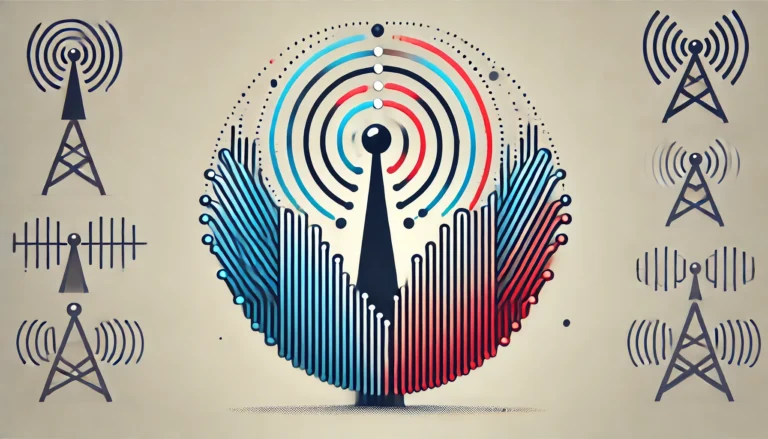Understanding Antenna Polarization: A Key to Efficient Wireless Communication
The Importance of Antenna Polarization
In the world of wireless communication, the way signals are transmitted and received significantly impacts performance. One critical factor that often determines the efficiency of this process is antenna polarization. Whether you’re setting up a home network, optimizing a business connection, or managing cellular towers, understanding polarization can make all the difference in signal quality and data speed. In this blog, we’ll explore the concept of polarization, its different types, and its role in advanced technologies like spatial multiplexing.
What is Antenna Polarization?
Antenna polarization refers to the orientation of radio waves as they travel through the air. Think of radio waves like ripples in a pond:
- Vertical Polarization: Ripples moving up and down.
- Horizontal Polarization: Ripples moving side to side.
For an antenna to effectively pick up a signal, its polarization must match the incoming wave. A mismatch can weaken the signal, resulting in slower data rates or dropped connections. This is where MIMO (Multiple Input Multiple Output) antennas shine, as they utilize multiple polarizations to maximize performance.
Types of Polarization in MIMO Antennas
MIMO antennas take advantage of different polarizations to handle multiple data streams simultaneously without interference. Here are two primary types of polarization used in MIMO systems:
Horizontal and Vertical Polarization (H+V)
H+V polarization, also known as cross-polarization, involves using antennas oriented to transmit and receive signals in horizontal and vertical directions. This approach ensures that signals don’t interfere with each other, allowing for more efficient communication.
Slant Polarization (+/- 45 Degrees)
Slant polarization involves positioning antennas at diagonal angles—+45 degrees and -45 degrees. This setup provides better performance in environments with multipath propagation, where signals reflect off obstacles and arrive at the receiver from various angles. Most cellular antennas use slant polarization for its superior ability to handle interference and maximize data throughput.
Matching Polarization to Your Setup
For optimal performance, it’s essential to match your antenna’s polarization with the broadcasting tower or signal source:
- Cellular Antennas: Typically use slant polarization (+/- 45 degrees).
- Wi-Fi Systems: May use horizontal and vertical polarizations depending on the device and environment.
If adjustments are needed, you can often rotate the antenna to switch between slant and cross-polarization.
Polarized Antenna Pairs vs. Spaced Antenna Pairs
MIMO systems employ two main techniques to enhance signal performance: polarized antenna pairs and spaced antenna pairs.
Polarized Antenna Pairs
Imagine tossing two pebbles into a pond—one creating ripples that move up and down (vertical polarization) and the other moving side to side (horizontal polarization). The ripples don’t interfere because they’re oriented differently, allowing the system to handle multiple data streams simultaneously. This setup improves signal efficiency without mixing up transmissions, much like two efficient couriers working on separate routes.
Spaced Antenna Pairs
Now picture standing at two different points around the pond and tossing in pebbles. While the ripples are similar, they start from different locations, reducing the chances of overlap. Spaced antenna pairs provide separate reception points, which is especially useful in environments with significant signal reflections. This approach ensures that if one signal path is blocked or degraded, the other can still function effectively.
Spatial Multiplexing: Boosting Data Speed and Efficiency
Spatial multiplexing combines the concepts of polarized and spaced antenna pairs to achieve even greater performance. It’s like tossing multiple pebbles into a pond from different points along the edge. Each pebble represents a unique data stream, and because they originate from different locations or orientations, the ripples (or data streams) don’t interfere.
This technique allows MIMO systems to:
- Transmit multiple data streams simultaneously.
- Enhance speed and efficiency without needing additional bandwidth.
- Handle high data demands in crowded or complex environments.
How This Translates to MIMO Antennas
MIMO antennas are designed to leverage these principles for maximum efficiency. Here’s how different configurations work:
- 2×2 MIMO: Uses two cross-polarized antennas (+/- 45 degrees) to handle two simultaneous data streams.
- 4×4 MIMO: Combines two sets of 2×2 cross-polarized antennas, spatially separated, to manage four data streams.
- 8×8 MIMO: Employs four sets of cross-polarized antennas, also spatially separated, to handle up to eight data streams.
These configurations cater to various use cases, from basic home setups to advanced 5G networks.
Key Takeaways: Why Polarization Matters
- Improved Efficiency: Matching the right polarization type with the environment and signal source ensures better data rates and fewer interruptions.
- Advanced Performance: Slant polarization (+/- 45 degrees) is ideal for complex environments with multipath propagation.
- Enhanced Scalability: Techniques like spatial multiplexing and cross-polarization enable MIMO systems to handle high-demand networks efficiently.
Mastering Polarization for Optimal Connectivity
Understanding antenna polarization is crucial for anyone looking to optimize their wireless communication setup. By choosing the right polarization type, leveraging advanced techniques like spatial multiplexing, and ensuring proper alignment with the signal source, you can unlock the full potential of your MIMO system. Whether for home, office, or industrial use, mastering polarization ensures faster, more reliable, and interference-free connections in today’s interconnected world.


